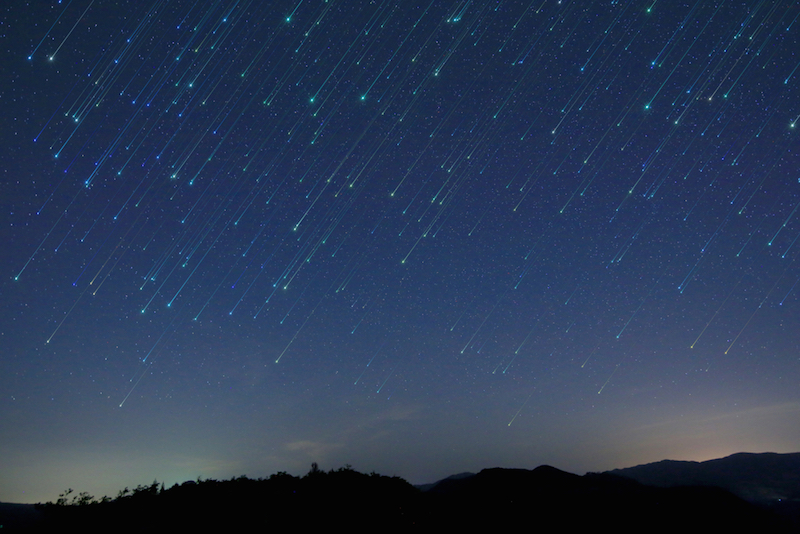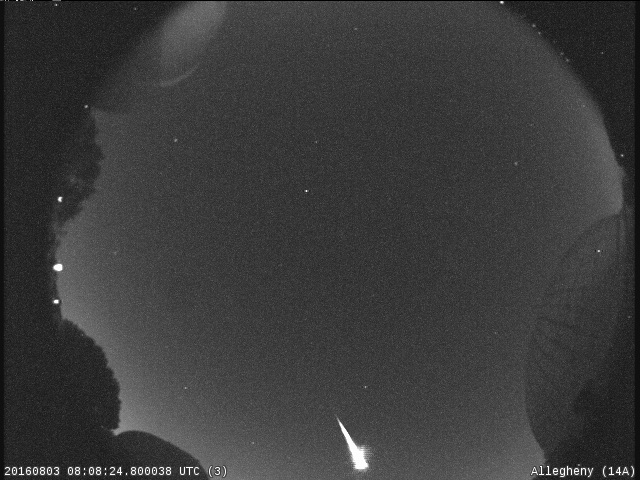It's Shooting-Star Time! How to Watch the Perseid Meteor Shower

It's almost time for one of the best nighttime celestial shows of the year — the Perseid meteor shower, a spectacular array of shooting stars that is expected to peak late Thursday night and early Friday morning (Aug. 11 and 12).
Even better, skywatchers don't need any special equipment to watch the Perseids, said Bill Cooke, head of NASA's Meteoroid Environments Office at the Marshall Space Flight Center in Alabama.
"All you've got to do is go outside, find a nice dark spot, lie flat on your back and look up," Cooke told Live Science. "You don't want binoculars. You don't want a telescope. You just use your eyes." [Perseid Meteor Shower 2016: When, Where & How to See It]
As many stargazers know, the Perseids peak every August, when Earth runs into a trail of debris left behind by Comet Swift-Tuttle. The tiny pieces of debris burn up when they enter Earth's atmosphere, leaving behind streaks of light known as meteors, or shooting stars, according to NASA.
On a typical night, people might see about 5 meteors per hour, which is much lower than the 80 to 100 meteors per hour people usually see when the Perseids peak.
This year, however, the show will be even more stunning, with as many as 200 visible meteors per hour during its peak, from Thursday night to Friday morning, Cooke said.
"This year we expect there to be more of them because Jupiter's gravity has tugged this trail of debris closer to Earth," Cooke said.
Get the world’s most fascinating discoveries delivered straight to your inbox.
The Perseids are named for the constellation of Perseus because they appear to come from that part of the sky, he said. But shooting-star seekers can see the meteors pretty much anywhere. Cooke offered several tips for watching the impressive meteor shower:
- The Northern Hemisphere has the advantage. "It's better north of the equator, and we in North America, Europe and Russia will have the best views," Cooke said.
- The key to watching the Perseids is to find a nice, dark spot. "If you're in the middle of the city, the city lights will wash out the fainter [meteors]" Cooke said.
- Give your eyes about 30 to 40 minutes to get used to the dark, night sky. "Don't expect to walk outside and see Perseids," Cooke said. "You may 'dumb-luck out' and catch one, but you're not going to see them until you give your eyes a chance to darken out."
- The Perseus constellation appears in the night sky at about 10 p.m. local time, but most meteors will be visible after midnight, according to Space.com, Live Science's sister site.
- Don't bring binoculars or a telescope, as these will greatly reduce your field of view, Cooke said. "You want to take in as much of the sky as possible, because a meteor can appear anywhere," he said.
- If you want to photograph the Perseids, bring a camera and a tripod. And then, set up your camera to take a long exposure for a duration lasting for a few seconds to a minute. If the exposure lasts for longer than a minute, you'll probably get the rotation of the stars in the photo, which might obscure one of the Perseids, Cooke said.
The Perseids will also be visible on Friday night and Saturday morning (Aug. 13), but there will be fewer meteors than there are expected to be the night before, he added.
Original article on Live Science.

Laura is the managing editor at Live Science. She also runs the archaeology section and the Life's Little Mysteries series. Her work has appeared in The New York Times, Scholastic, Popular Science and Spectrum, a site on autism research. She has won multiple awards from the Society of Professional Journalists and the Washington Newspaper Publishers Association for her reporting at a weekly newspaper near Seattle. Laura holds a bachelor's degree in English literature and psychology from Washington University in St. Louis and a master's degree in science writing from NYU.
 Live Science Plus
Live Science Plus






